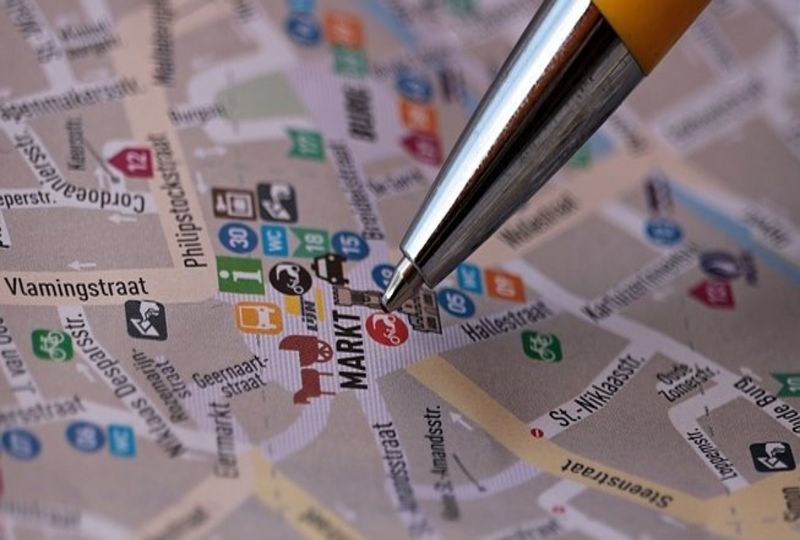The Best Ways to Ask for and Give Directions in German

If you've ever found yourself in a country where English isn't the native tongue, you know that undercurrent of dread as you try to reach your next destination. Even if you are simply making your way through the airport, asking for directions can leave you with a vague sense of discomfort.
Fortunately, learning directions in German is fairly easy – your biggest obstacle is going to be the vocabulary.
This article provides you with the key words and phrases to asking for and giving directions in German. Even though many Germans (and people in German speaking countries) know English, it’s best to use the language as much as possible.
Talking about directions is one way to start building confidence in your language abilities. It uses basic terms and people tend to pay more attention to what they are saying because they are actively engaged in imparting information. It’s a win-win to feeling more comfortable as you speak German.
Before diving into the vocabulary though, it’s important to know how to politely get someone’s attention to ask for directions.

“Excuse Me”
First impressions are very important. When you are asking someone for help, you always want to be polite, especially if you don’t know that person. Always start with one of the key polite phrases.
| German | English |
|---|---|
| Hallo. | Hello. |
| Entschuldigung. | Excuse me. |
| Es tut mir Leid. | I’m sorry. |
| Darf ich Ihnen bitte eine Frage stellen? | May I ask you a question? (formal) |
For the last phrase, make sure you pause and get an answer before you dive into asking questions.
Once you get a response for all of these introductions (or more accurately, a way of getting someone’s attention), you will be able to jump into asking for directions.
You’ve established that you can be polite and respectful, making it much more likely that the person will help you.
And while we are talking about impressions, make sure to continue to be polite once you have directions.
| German | English |
|---|---|
| Danke. | Thank you. |
| Auf Wiedersehen. | Goodbye. |
These are all basics components of learning German. This is a great time to do a bit of refreshing to make sure you can initiate a conversation.
This also applies to getting directions when you are driving. You will likely want to keep the introductions as short as possible if you are in your car. Just be mindful that short is fine, but don’t sacrifice being polite. If needed, turn your car off; this is probably a good idea any way since you should be giving the directions your full attention – that’s hard to do if you are also paying attention to your running car.

Understanding Directions
To get directions, you should remember to be as brief as possible. By all means, make sure you understand the directions – that’s the whole reason you are asking questions. Just remember that you want to keep it short so the person you are asking can get back to whatever they were doing. If you are giving directions, you want to let them get going so they don’t forget the directions.
The best way to get right into the directions is to have the right vocabulary. Here are some key words you need to know:
| German | English |
|---|---|
| Wo | Where to, as a specific location or something stationary |
| Wohin | Where to, as in a direction, shows movement |
| Dort | there, a specific location |
| Dortin | there, heading to a location, shows movement |
| Rechts | right |
| Link | left |
| Gerade au | straight ahead |
| Entlang | along |
| Gegenüber von | opposite of / opposite from |
| Die Ecke | the corner |
| Der Nord | north |
| Der Süd | south |
| Der Ost | east |
| Der West | west |
| Die Stadt | city |
| Der Plan | map |
| Die Straße | street |
These are many of the most basic words you are likely to need when asking for directions. Now it’s time to learn a few phrases to help you get started.
| German | English |
|---|---|
| Wo ist …? | Where is …? |
| Wo sind wir? | Where are we? |
| Wohin gehen wir? | Where are we going? |
| Können Sie mir sagen, wo .. ist? | Could you tell me where … is? |
| Ist es weit? | Is it far? |
| Wie komme ich zu…? | How do I get to …? |
| Welche Ausfahrt ist für Köln? | Which exit do I take for Cologne? |
| Wo ist der Bahnhof? | Where is the train station? |
| Biegen Sie heir ab. | Turn here. |
| Biegen Side heir rechts ab. | Turn right here. |
| Das ist weit weg von hier. | That’s far away from here. |
| Ich gehe vor die Biblioteck. | I’m going to the library. |
| Gehen Sie immer gerade aus. | Keep going straight. |
| Gehen Sie um die Ecke. | Go around the corner. |

Additional Resources
It’s possible that you won’t be able to find someone. Or maybe you didn’t get or understand all of the directions. Or maybe you only remembered the first part. Fortunately, you have a lot of resources at your disposal to help you get where you are going.
- German Google map
- ViaMichelin
- GPS (if you have a mobile device – just make sure to switch it to German to keep learning)
You should always try to ask for directions if you need them. It’s a great way to practice your basic German. People tend to speak slower when giving directions, so you won’t have to ask them to slow down. You probably have the vocabulary to understand and have a perfect time to reinforce what you know.
Use these resources only if no one is available to ask for directions. You aren’t likely to see the person or people again, so it’s the perfect way to practice your German speaking abilities. It’s the perfect way to get out of your comfort zone in a safe way.

Try it out!
If you have a language partner, you can practice asking for and giving directions. If you have a German teacher, ask for directions at school – even if you don’t need them.
Periodically practicing asking for or giving directions is a good way to keep practicing German.
